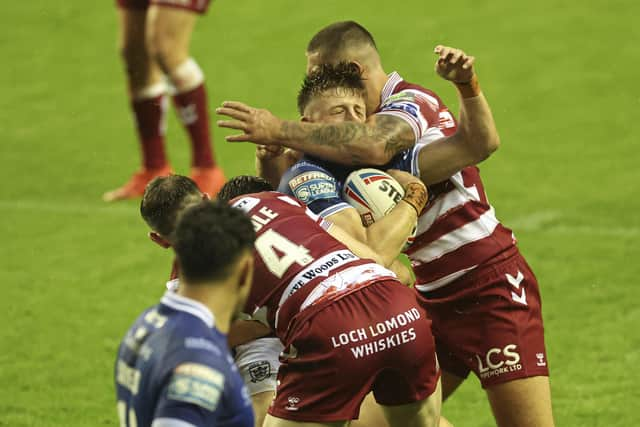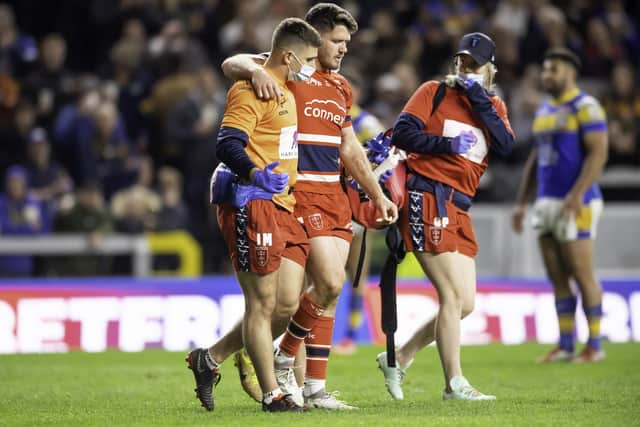Leeds Rhinos prop Mikolaj Oledzki sends message to lawmakers as rugby league braces itself for change
After coming into force at grassroots level next year, tackling above the armpit will be outlawed at all levels of English rugby league from 2025 in a bid to reduce the risk of concussion.
The Rugby Football League board accepted 44 recommendations in all from the sport's brain health and clinical advisory group, including match limits for professional players.
Advertisement
Hide AdAdvertisement
Hide AdThere is particular concern over the potential implications of the tackle height change after a controversial trial at academy level.
Big men such as Oledzki are set to be especially tested by the law amendment but the Rhinos forward is more concerned about the impact on the game.
"It's a tough one and I understand what the RFL are doing," he said. "They're trying to make the game safer.
"Everything they do is based on statistics and they're adapting to those statistics. They mean well and we understand that but it has to be adaptable. That's the big thing.
Advertisement
Hide AdAdvertisement
Hide Ad"As players, the new rules will come in and we will buy in. All they can do is see how everyone gets on and if it doesn't go the way they think it will and there are more concussions, people don't enjoy the game as much or the spectacle loses its magic, they might have to adapt again.


"Then again, it might have a positive effect and people might say that the game hasn't changed that much and there are fewer concussions. We'll just have to wait and see."
Professor Ben Jones, who led the TaCKLE research project that helped influence the RFL's decision to lower the legal tackle height, has stressed that the lawmakers will continue to follow the data.
"We'll be getting the injury data and concussion data, video analysis data and instrumented mouthguard data which will allow us to annually make sure that the changes we've made are achieving the desired outcome," he said.
Advertisement
Hide AdAdvertisement
Hide AdOn the opening night of the academy trial at Odsal in June, Leeds Rhinos and Bradford Bulls conceded 57 penalties between them.


The penalty count remained high throughout the 24-game trial but offences for direct contact to the head went down significantly as players lowered their tackle height.
Jones does not expect the same glut of penalties when the law changes are introduced.
After seeing players attempt to buy penalties by dipping into tackles during the trial, referees will be given the scope to make live judgment calls, which will extend to barge-over tries.
Advertisement
Hide AdAdvertisement
Hide Ad"The key difference to the trial is the zero-tolerance line that we drew," he said.


"Within all the new laws going forward, we've got clear mitigating factors. So if the tackler is bent at the knees and hips and makes attempts around the armpit, there will be mitigation so the match official won't have to blow his whistle as much and the game can flow.
"What we typically saw before we modified the rules was that the ball carrier and tackler were upright going into tackles. The change in the tackle height meant that the tackler bent more into contact and later in the rounds we saw the ball carrier bend more into contact which therefore made it harder for the tackler to contact legally.
"We've used that information to ultimately inform some of our mitigation around what would be 'play on' and what would be sanctioned.
Advertisement
Hide AdAdvertisement
Hide Ad"Another example is if a ball carrier loses height unexpectedly late and a tackler can't respond, the match official may not give a penalty.
"There will be a lot of debate and discussion around the grey area – but none of that will be around contact to the head because that's now a sacred area."
Comment Guidelines
National World encourages reader discussion on our stories. User feedback, insights and back-and-forth exchanges add a rich layer of context to reporting. Please review our Community Guidelines before commenting.
